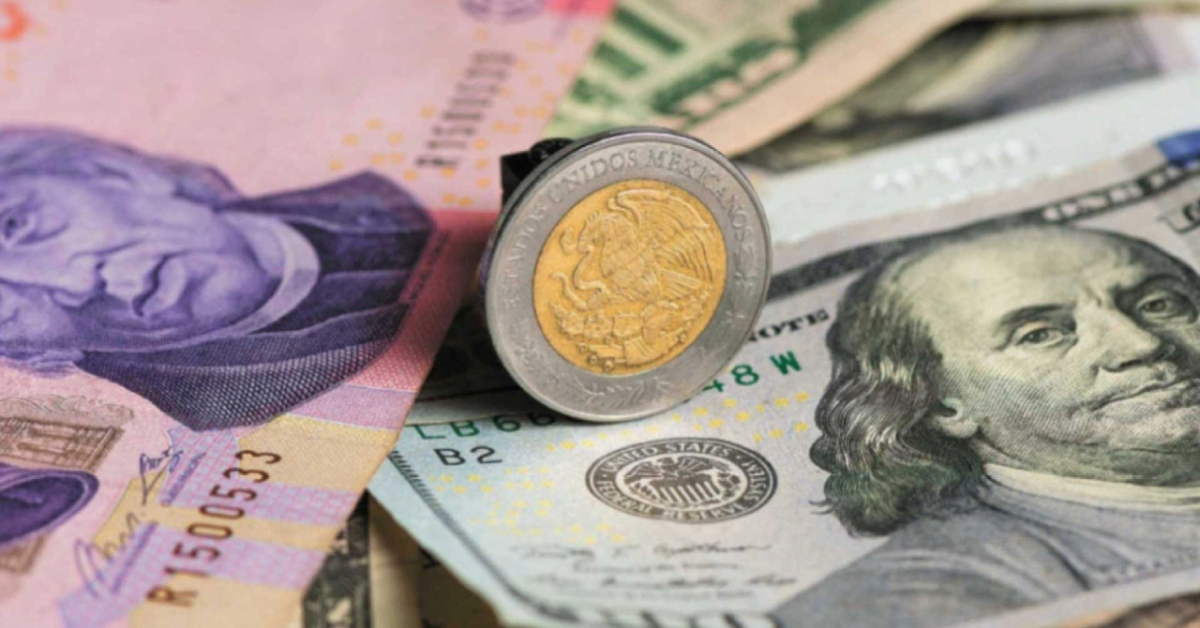Puerto Vallarta, Mexico – The Mexican peso appreciated against the U.S. dollar on Thursday, buoyed by weaker-than-expected inflation data in the United States. This improvement came despite continued market caution surrounding President Donald Trump’s controversial tariff plans.
According to the Bank of Mexico (Banxico), the exchange rate closed the day at 20.0951 pesos per dollar, moving up from 20.1797 in the previous session. This 8.46-cent gain translates to a daily increase of 0.42% for the local currency. Throughout the day, the dollar traded in a range with a high of 20.1989 and a low of 20.0596—its strongest level since mid-December. Meanwhile, the Dollar Index (DXY), which measures the greenback’s performance against six major currencies, rose 0.24% to 103.84 points.
“Trump threatens to impact the U.S. economy with his tariff policies at a time when several U.S. assets (including the dollar) that had strengthened were already highly inflated,” noted Albert Suriol, founder of the Wall Street Funded platform.
Inflation Cooling Fuels Fed Rate Speculation
Thursday’s boost to the peso followed the latest U.S. Producer Price Index (PPI) figures, which showed no growth in February—missing the consensus forecast of a 0.3% increase. It marked the lowest reading since July. On a year-over-year basis, PPI inflation slowed from 3.7% to 3.2%. This, combined with Wednesday’s weaker consumer price data, has reinforced market speculation that the Federal Reserve may cut its benchmark interest rate sooner than previously anticipated.
Trade Uncertainty Persists
Despite the encouraging data on inflation, traders remained cautious amid growing trade tensions. President Trump recently threatened to impose a 200% tax on European wine, champagne, and other alcoholic beverages if the European Union does not repeal its newly introduced tariff on American whiskey.
The European bloc, meanwhile, imposed its own tariffs in response to the new U.S. levies on steel and aluminum. The EU signaled plans to introduce taxes on roughly €26 billion worth of U.S. goods next month. Analysts warn that the situation may escalate in the coming weeks.
“Attention remains focused on what happens in the United States. Everything indicates that the upward spiral of tariffs is just beginning, and that by early April the market will have a clearer idea of how far it can go,” wrote CiBanco in a research note.
Peso Also Advances Against Euro
In this charged environment, the Mexican peso also strengthened against the euro for the second day in a row. The currency appreciated from 21.9993 to 21.8031 pesos per euro, marking a gain of 19.62 cents—an 0.89% improvement.
Mexico’s President Claudia Sheinbaum has maintained a cautious stance, opting to wait and pursue diplomatic agreements in hopes of avoiding a direct clash with U.S. tariffs. This position, in contrast to the swift retaliatory measures by other nations, appears to be easing market fears of an immediate trade standoff involving Mexico.
“Given the recent spread of tariff anxiety regarding the peso, the dollar’s price has found support to continue its downward trend, pending the official tariff decision by the United States on April 2,” said Monex in a note to clients.
With critical trade deadlines looming, analysts say volatility may remain high. For now, however, both softer U.S. inflation figures and Mexico’s measured approach have worked in the peso’s favor—at least until early April’s anticipated developments on the trade front.
Puerto Vallarta, Mexico - The Mexican peso appreciated against the U.S. dollar on Thursday, buoyed by weaker-than-expected inflation data in the United States. This improvement came despite continued market caution surrounding President Donald Trump’s controversial tariff plans.












